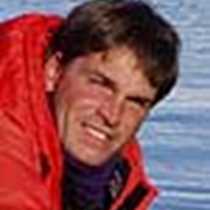Astoria and Fort Clatsop National Monument
We had a beautiful, sunny day in Astoria. Remarkable considering what Lewis and Clark went through during their stay in the winter of 1805-06: only 12 days without rain and only on six of those days did they see the sun. Sea Bird docked within walking distance of the Columbia River Maritime Museum, and just after breakfast we enjoyed a informative tour with a docent from the museum. We learned about the treacherous Columbia River Bar and the specialized boats that the Coast Guard uses to rescue sailors in its tumultuous waves. Not much is left of the salmon canneries in Astoria, but old photographs showed how dominant the fishing industry was in the late 1800s and early 1900s.
One of the jewels on the Lewis and Clark trail is the fort reconstructed on the site where the Corps of Discovery waited out their soggy winter. Lewis and Clark named it Fort Clatsop after the local Native Americans that lived nearby. The reconstruction is based on a floor plan from William Clark’s journal; the roof and gates are based on what is known about Army construction techniques at that time. Our first impression was that it is small-especially for 33 people and one big dog. Seeing their living quarters and knowing how low they were on supplies made us realize why they were so eager to leave as soon as possible that spring. Luckily when we were ready to leave, we had a warm, dry ship awaiting our return.
The Astoria Column sits atop Coxcomb Hill with a commanding view of the area. The view gets better after climbing the 162 steps to the top of the column. Additional entertainment comes in the form of small balsam wood gliders that when thrown just right can sail over the trees and out of sight. After our visit to the column, we headed to the Pacific Ocean to reach that goal which Lewis and Clark worked so hard to attain. We had time to walk on the beach looking for shells and enjoying the sound of the surf. Once back on the ship, Captain Kalbach took us out to the Columbia River Bar so that we could see this area that is such a famous hazard to navigation. Just before we got to the rough water he turned Sea Bird around and we headed for Portland, our final port of call.
We had a beautiful, sunny day in Astoria. Remarkable considering what Lewis and Clark went through during their stay in the winter of 1805-06: only 12 days without rain and only on six of those days did they see the sun. Sea Bird docked within walking distance of the Columbia River Maritime Museum, and just after breakfast we enjoyed a informative tour with a docent from the museum. We learned about the treacherous Columbia River Bar and the specialized boats that the Coast Guard uses to rescue sailors in its tumultuous waves. Not much is left of the salmon canneries in Astoria, but old photographs showed how dominant the fishing industry was in the late 1800s and early 1900s.
One of the jewels on the Lewis and Clark trail is the fort reconstructed on the site where the Corps of Discovery waited out their soggy winter. Lewis and Clark named it Fort Clatsop after the local Native Americans that lived nearby. The reconstruction is based on a floor plan from William Clark’s journal; the roof and gates are based on what is known about Army construction techniques at that time. Our first impression was that it is small-especially for 33 people and one big dog. Seeing their living quarters and knowing how low they were on supplies made us realize why they were so eager to leave as soon as possible that spring. Luckily when we were ready to leave, we had a warm, dry ship awaiting our return.
The Astoria Column sits atop Coxcomb Hill with a commanding view of the area. The view gets better after climbing the 162 steps to the top of the column. Additional entertainment comes in the form of small balsam wood gliders that when thrown just right can sail over the trees and out of sight. After our visit to the column, we headed to the Pacific Ocean to reach that goal which Lewis and Clark worked so hard to attain. We had time to walk on the beach looking for shells and enjoying the sound of the surf. Once back on the ship, Captain Kalbach took us out to the Columbia River Bar so that we could see this area that is such a famous hazard to navigation. Just before we got to the rough water he turned Sea Bird around and we headed for Portland, our final port of call.




